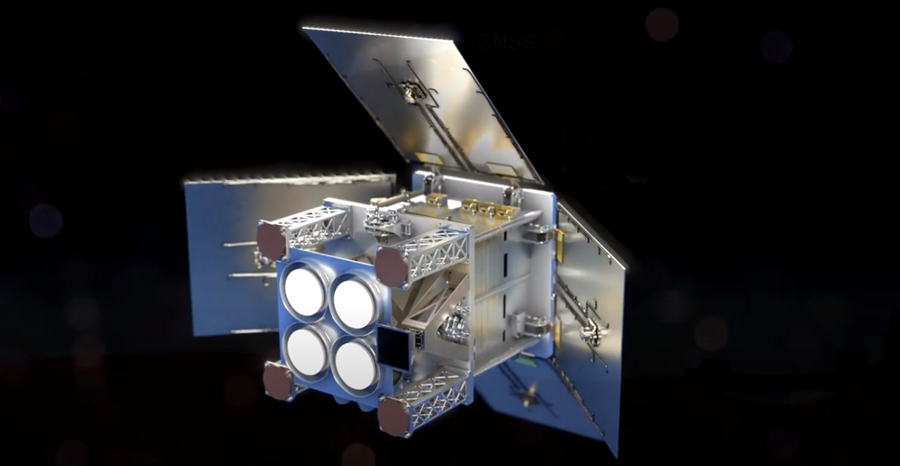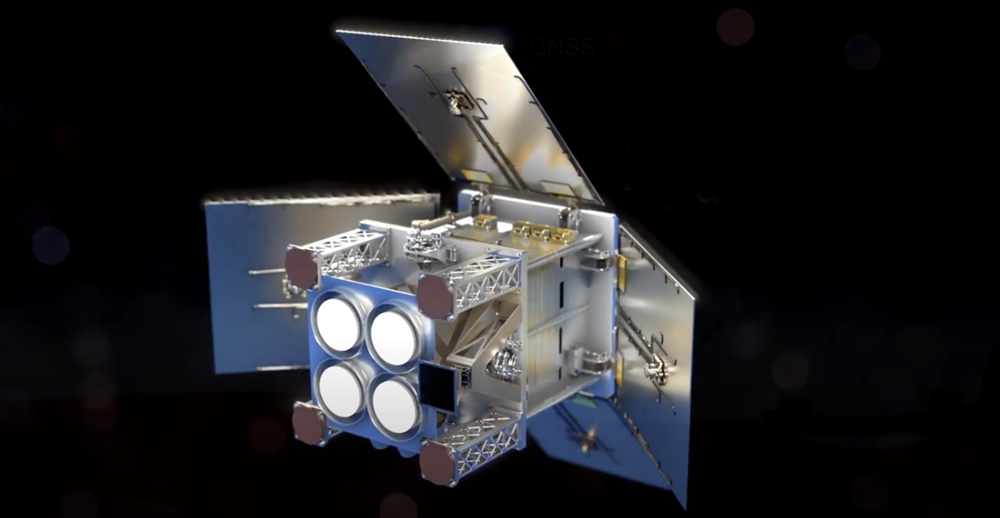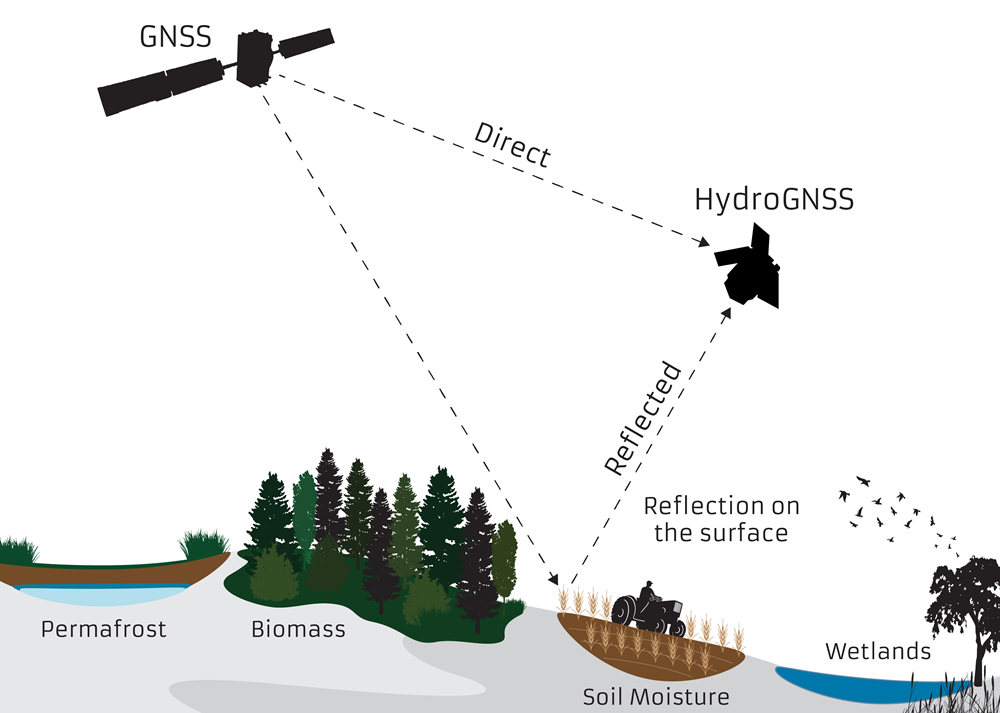
SSTL’s 55kg HydroGNSS satellite will be launched in under 3 years and will use GNSS-Reflectometry to measure climate variables
Surrey Satellite Technology Ltd (SSTL) and the European Space Agency (ESA) have signed a contract today for HydroGNSS, a 55kg small satellite to measure climate change variables. The contract, with an initial value of €24 million, was signed during ESA Phi Week by Phil Brownnett, SSTL’s Managing Director and ESA’s Acting Director of Earth Observation Programmes, Toni Tolker-Nielsen. It was awarded under ESA’s new Scout programme, set up to prove new concepts for Earth Observation using small satellites by exploiting a rapid build programme targeting 3 years from kick-off to launch and a maximum cost of €30m. This marks a new approach for ESA, recognising the performance and utility of using small satellites to prove new concepts that add scientific value and can be scaled up for future missions.
Phil Brownnett, SSTL’s Managing Director, said “We are very pleased to secure a contract with ESA for our HydroGNSS satellite which combines a low cost small satellite with an innovative GNSS Reflectometry payload, helping to tackle the global challenge of climate change and delivering the UN Sustainable Development Goals by providing valuable hydrological data. This key climate variable data will help scientists understand climate change and contribute towards weather modelling, ecology mapping, agricultural planning and flood preparedness.”
Toni Tolker-Nielsen said, “The Scouts are complementary to the science-driven Earth Explorers. They are characterised by an agile and low-cost development process to prove new concepts for future ESA endeavours, and to timely add scientific value to current data through supplementary observations. We are extremely happy to sign this contract today with Surrey Satellite Technology and look forward to this novel new mission becoming a reality.”
Beth Greenaway, Head of Earth Observation and Climate at the UK Space Agency, said: “As Glasgow prepares to host the world’s biggest climate summit, COP26, the UK is leading the way in using space to monitor climate change, with Earth Observation satellites providing vital data to help tackle the biggest challenge facing our planet. SSTL’s expertise, which has been supported by technology funding through the Centre for Earth Observation Instrumentation, has led to this exciting new small satellite to measure changes in the Earth’s water. It is one of the first ESA Scout missions and will provide crucial information for climate scientists that could also help improve farming practices and flood defences.”
SSTL’s HydroGNSS satellite will take measurements of key hydrological climate variables, including soil moisture, freeze thaw state over permafrost, inundation and wetlands, and above ground biomass, using a technique called GNSS Reflectometry. Previously, addressing hydrological variables such as these has required sizable and higher cost satellites with large aperture antennas, but GNSS Reflectometry exploits existing signals from Global Navigation Satellites (GNSS), such and GPS and Galileo, as radar signal sources. These signals are reflected off the land, ice and ocean and can be collected by a low power receiver on a small satellite in low Earth orbit, and used to yield important geophysical measurements.
SSTL has pioneered the use of GNSS-R through the progression of GNSS-R instruments on previous missions: SNAP-1 (2000), UK-DMC1 (2005), TechDemoSat-1 (2015), NASA CYGNSS (2015) and DoT-1 (2020).
SSTL is working closely with partners at Sapienza, Tor Vergata and IFAC-CNR in Italy, FMI in Finland, IEC/IEEC in Spain, NOC in UK, and University of Nottingham to tackle the scientific and technological challenges involved.
HydroGNSS paves the way for an affordable future constellation that can offer measurements with a temporal-spatial resolution not accessible to traditional remote sensing satellites, thus offering new capacity to monitor very dynamic phenomena and helping to fill the gaps in our monitoring of the Earth’s vital signs for the future.
ENDS
Twitter @SurreySat
Instagram @surreysatellites
#DoingSpaceDifferently
Notes to editor:
Full size accompanying images for this press release can be downloaded at the bottom of this page.
Press Contact:
Joelle Sykes, PR Manager, SSTL
Tel: +44 (0)1483 804243
Mob: 07775 000853
Email: j.sykes@sstl.co.uk
About SSTL
Surrey Satellite Technology Limited (SSTL) is at the forefront of space innovation delivering customisable complete mission solutions for Earth observation, science, communications, navigation, in-orbit debris removal and servicing and exploration beyond Earth infrastructure.
Since 1981, SSTL has built and launched 70 satellites for 20 international customers, as well as providing training and development programmes, consultancy services, and mission studies for ESA, NASA, international governments and commercial customers.
SSTL is well known for innovative missions such as the CARBONITE satellites, the NovaSAR S-band radar imaging satellite and the RemoveDEBRIS space debris removal technology demonstrator.
Headquartered in Guildford, UK, SSTL is part of Airbus.
Download PDF
